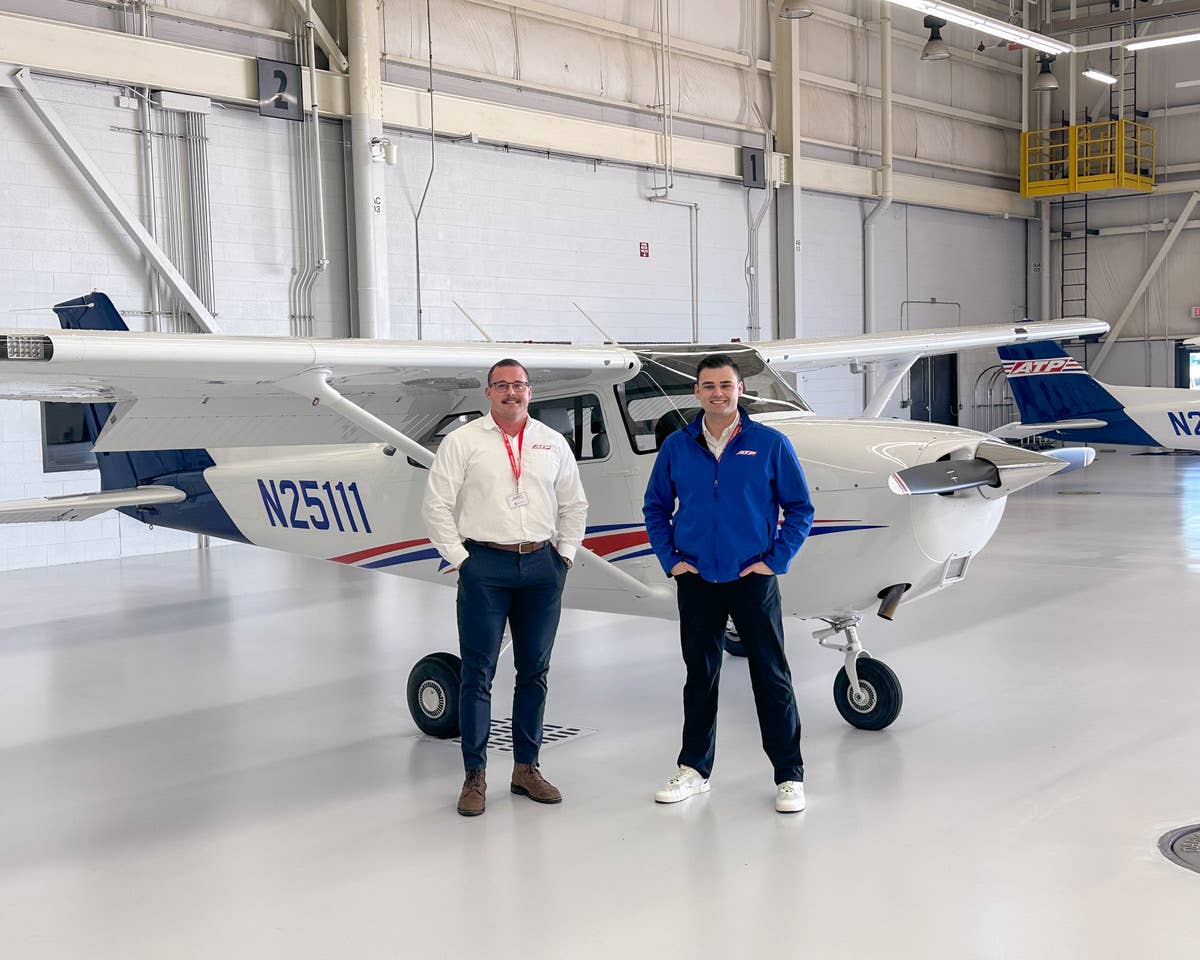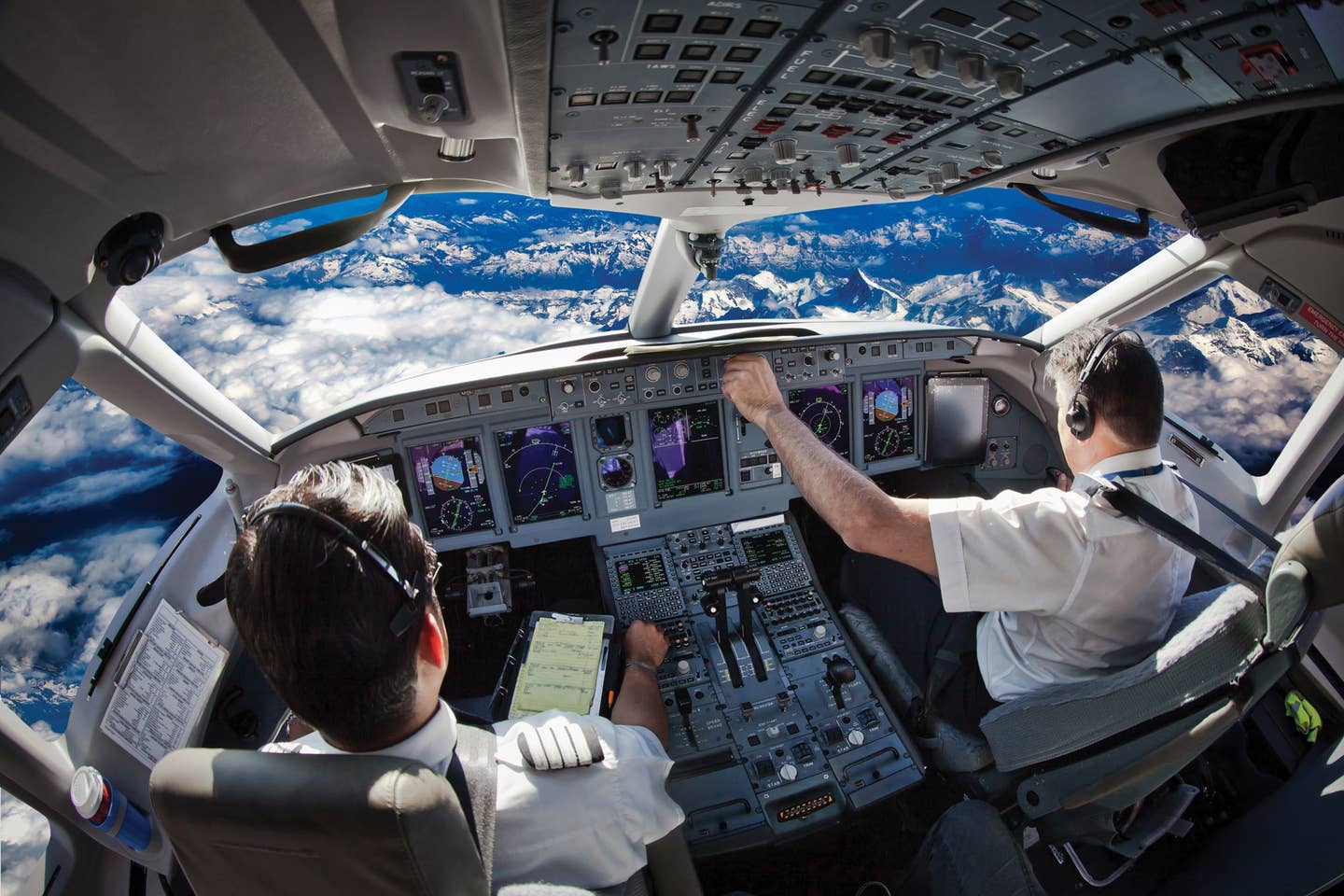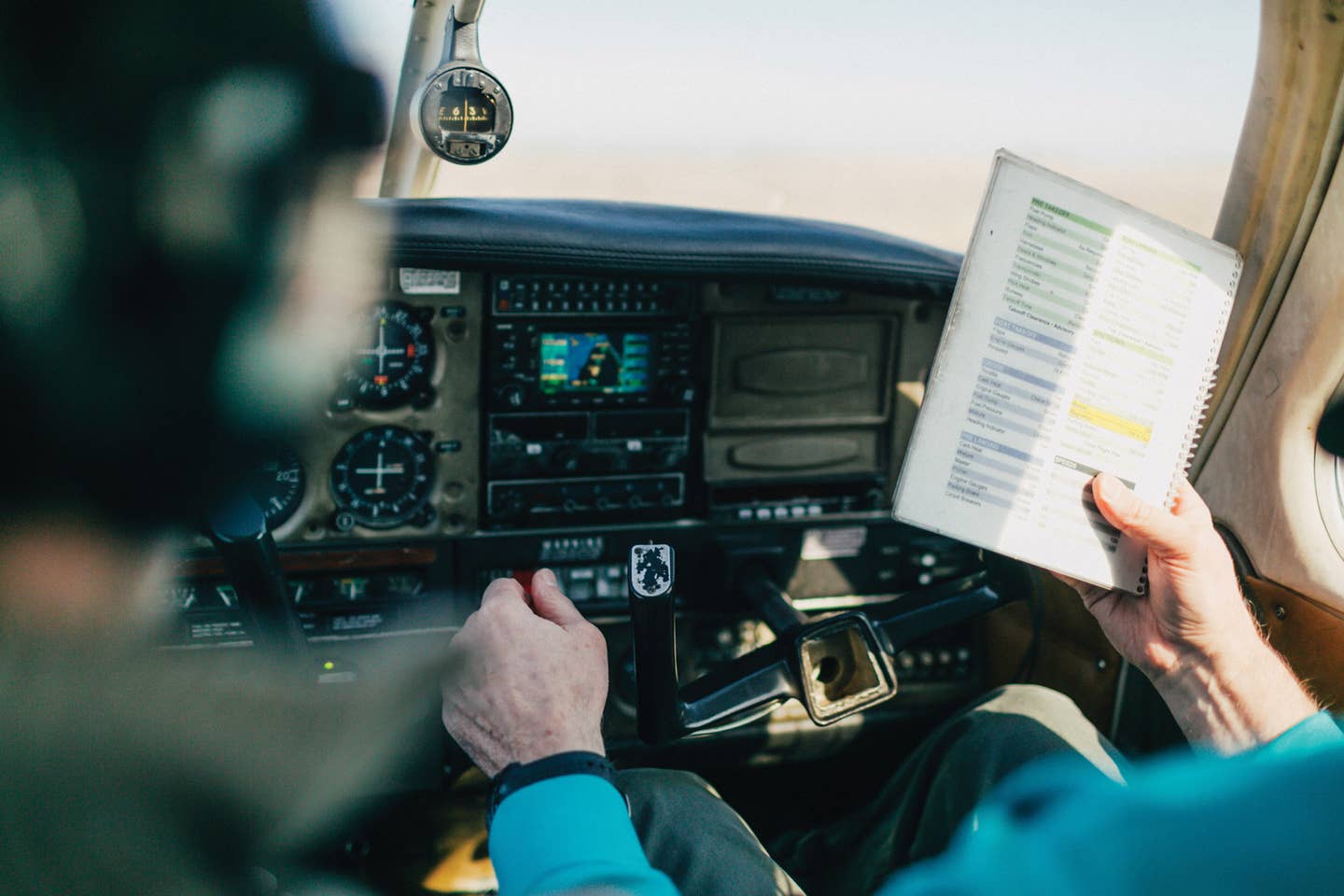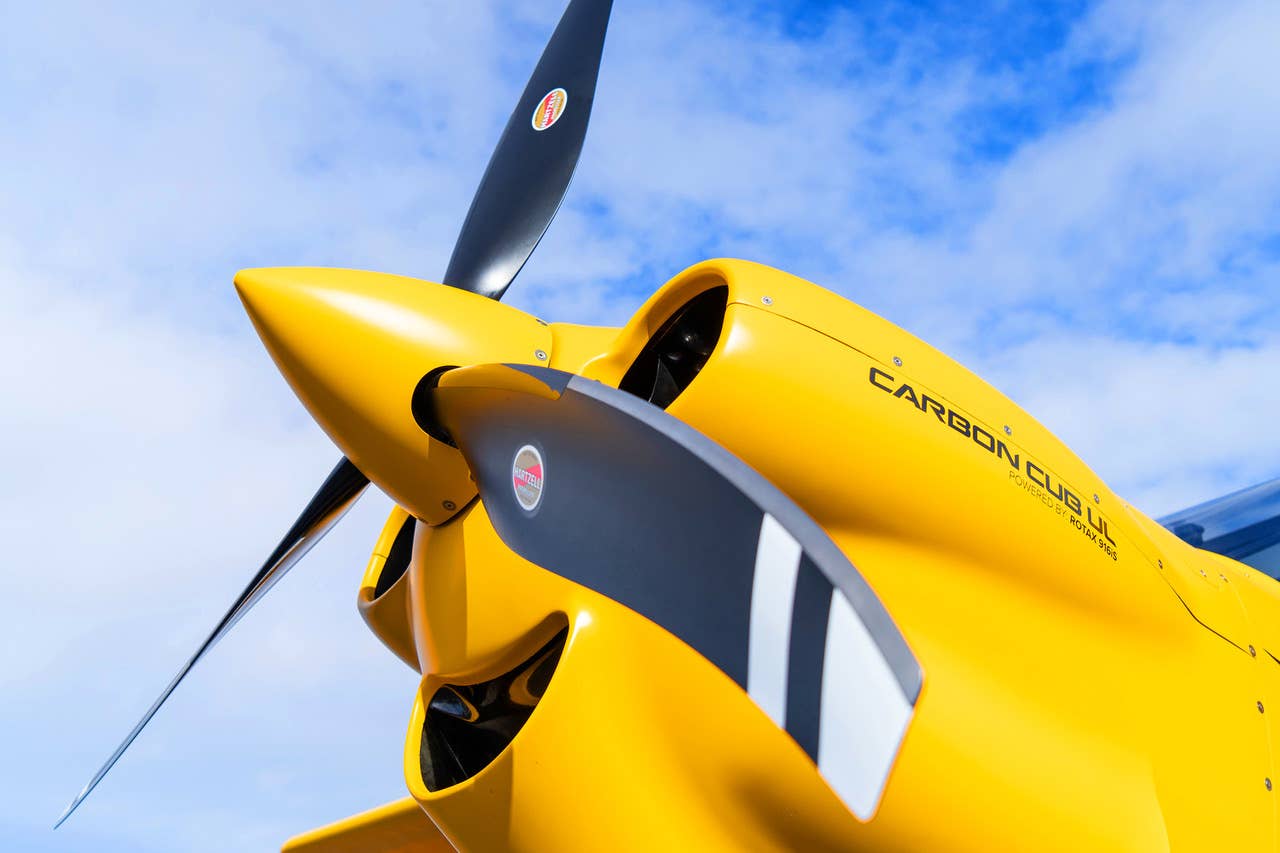What‘s The Rudder‘s Real Purpose?
Shedding light on the least understood and most misused control in an airplane
 Proper use of the rudder on takeoff will increase climb performance. |
Here's a black-and-white statement that's more fact than opinion: The rudder is easily the least understood and most misused control in an airplane. Actually, "misused" might be the wrong word. The sentence "the rudder is the control most likely not to be used when it should be," would be more descriptive.
From the very beginning, pioneer aircraft designers realized that they needed a rudder to control yaw, just like a boat. However, most thought the rudder would be the method used to turn the airplane. Again, like a boat. Turn left, left rudder, and so most designs made flat turns---no bank. Santos-Dumont, the great French designer, upon witnessing the Wrights' first demonstration flights in France, extolled the brothers' genius in using the bank to turn the airplane, thus imparting much more precise control to the craft. In so doing, however, the rudder was relegated to the role of being a trimming device rather than a primary control surface. That's when the confusion began, and it has continued to this day.
Today, far too often, when the pilot on the street is asked the purpose of the rudder, the answer will be a vaguely blank stare and fumbling words having something to do with turns. And, believe it or not, it's not unusual to run across a pilot who claims he/she was never told to use the rudder when turning (no, it really happens!).
Every pilot should be able to state in a very concise manner, in 25 words or less, the exact purpose of the rudder. It will take many more words than that, however, to enumerate the instances and the ways in which the rudder is to be used.
Simply stated, the purpose of the rudder is to control yaw. That's only nine words, so it's simpler than we thought. However, that may be an over-simplification. That definition can best be understood by studying the situations in which application of the rudder is called for and then analyzing the effect of using the rudder, as well as the effect of not using it.
Incidentally, when talking about the rudder, most folks assume the primary discussion will be centered on turns. And, yes, that's important, but that's just one of several situations where it's needed, and we'll approach those often-unexpected situations first.
 The rudder controls yaw movement. |
The Skid Ball And The Rudder
Before we get into the details of using the controls properly, let's talk about the skid ball. There's one on every instrument panel in the air, but it's usually ignored. This is a mistake. For all intents and purposes, the ball is tied directly to the rudder through the pilot's feet. It's giving the pilot a graphic representation of what's happening to the airplane in terms of yaw. In so doing, it's literally grading the pilot on his understanding of the rudder's purpose and when it should and shouldn't be used.
If you look down and the ball is out of center, one of several things is happening, regardless of the situation in progress. It could be that the pilot is unconsciously putting aileron down when it isn't needed (more on that later). Or, maybe the aileron is down at the proper time, but no rudder is countering the adverse yaw created. It could also be that various forces, most of which are generated by the engine, P-factor being the most noticeable, are causing the airplane to yaw, and the pilot isn't compensating.
In normal flight situations, the ball never lies. Generally, if it's off center (not counting when purposely side or forward slipping), the aircraft is yawing, and the rudder is in the wrong position. So, you step on the ball to center it and eliminate the yaw. It's as simple as that.
P-Factor, The Ball And The Rudder
Every single-engine airplane that has a propeller has P-factor (unless it has counter-rotating propellers, and most of us aren't likely to be flying one of those). There's also gyroscopic procession, most noticeable on bringing up the tail on a tailwheel airplane. And then there's spiraling slipstream, which is generally not separately identifiable in a practical sense because its effects are overlaid by P-factor effects. The effect of all of them is to yaw the airplane (drive the ball off center), and the cure for all of them is rudder. Step on the ball, and life is good.
One of the difficulties in explaining P-factor and its effect in climb is that modern aircraft designers have cleverly done everything possible to minimize the effect. But, their efforts can't eliminate it. If the propeller is there, the P-factor is there. It's the inevitable result of the differing angles of attack of the right blades versus the left---the ascending blades versus the descending blades. You don't have to search very far on the Internet to find a detailed explanation of what's going on, but suffice it to say that the net result is that the center of lift of a propeller at high power in a climb is shifted to the right. So, the nose naturally wants to go left. And it will, if left to its own devices.
In smaller, lower-powered aircraft, the left turning tendency on climb is minimal because of the smaller, lighter propeller and smaller engine. Also, the engineers have designed the airplane to neutralize much of the effect. In aircraft with larger engines, say high-horsepower singles, especially aerobatic aircraft where nothing has been done to minimize the effect, if the foot is taken off the right rudder, the airplane will waste no time in turning left. Sometimes hard left. The yaw is to the left, so the ball is to the right, and the pilot has only to step on the ball to center it during the climbout.
A logical question to be asked is, "What difference does it make if the ball is off center during the climb? It's not as if the effect is so strong we're slammed against the cockpit wall." And that's an accurate observation, but here's another black-and-white statement: Anytime the ball is off center, the airplane is yawing. And, if it's yawed, it's not cutting cleanly through the air. In fact, it's flying slightly sideways, so all of the effort put into streamlining is wasted. The higher drag caused by the yaw is eating up horsepower, and the climb rate will be less because of it. Yaw destroys efficiency, and efficiency is the cornerstone of aerodynamics and flying in general.
Yaw On The Approach
The effect of P-factor is reversed on the approach, so instead of yawing left, it yaws right. The effect usually isn't as dramatic as on climbout, but it's there, nonetheless. Cut the power, decrease the angle of attack, hold a slower glide speed, and the ball will be off center to the left. If you leave it there and don't correct with just a hint of rudder, the efficiency of the glide will be degraded unnecessarily. In addition, the rate of turn in left turns will be slowed. In smaller aircraft, this isn't a very obvious effect. However, in more powerful aircraft with bigger propellers, it can be very obvious.
Of course, if it's a power approach, most of the effect of P-factor is barely visible and usually ignored. Where it will be seen in that situation is right at the bottom of the approach, when the power is finally killed, the nose will have a tendency to yaw slightly right. However, in nose draggers, most pilots ignore that, too, which is a little sad.
 |
Level Turns
Yes, an airplane can be turned while the feet are left on the floor. And they often are. But, to do so is to ignore the way the nose is yawing around, what the ball is doing and how the airplane feels (slightly unsettled).
To turn an airplane, it must be rolled into a bank. To be rolled into a bank, the lift on the wings must be imbalanced, meaning, the ailerons are deflected with the outboard one down and the inboard up. So, the outboard wing has more lift than the inboard one. When the bank angle is established, the ailerons are centered because, if they aren't, the airplane will just keep on rolling.
One of the sad facts about aviation is that absolutely nothing is free. This is especially true of lift. Whether it's a flap, an elevator, a rudder or an aileron, as soon as it's deflected so as to increase lift, the drag is increased. More lift, more drag. That's just an aviation fact of life courtesy of the vectors at work. So, when the outboard wing has more lift, it also has more drag, and that wing tries to slow down more than the inboard wing, so it pulls the nose to the outside of the turn. That's the definition of adverse yaw.
While in the act of rolling in, the adverse yaw tries to pull the nose to the outside of the turn. When everything is centered up, lift is balanced, left and right, so is the drag, and the rudder is no longer needed.
While rolling out of the turn, the lift distribution right and left is again imbalanced. So, the drag is again imbalanced, and the nose tries to yaw opposite to the direction the airplane is rolling. In this case, it moves into the turn, and the rudder is needed in the direction of the roll.
P-Factor, Yaw And Climbing, Gliding Turns
Climbing and gliding turns can be a little confusing as the neutral point for the rudder has been shifted off center because the rudder is constantly needed one way or the other just to maintain proper balance. This changes the way rudders are used in turns because P-factor is always present trying to yaw the nose.
A climbing left turn needs no rudder to initiate the roll because P-factor is already trying to move it left and is being held in check by subtle right rudder. So, while rolling left, for instance, rather than using left rudder, the right rudder being held is simply decreased. When turning right, more rudder than usual will be used, but only while the ailerons are displaced.
In a glide, the nose wants to move to the right, so left rudder is always there. So, turning left needs more rudder in addition to what's already there, and turning right just requires unloading the left rudder.
The Use Of Rudder Defines The Pilot
When flying with a pilot who truly understands when and when not to use the rudder, we subliminally know we're riding with someone who's closer to being part of the airplane than most. Often, we're not sure exactly why we feel that way, but something about the way the airplane behaves, as if it's on rails, tells us that this guy is an aviator, not a driver.

Subscribe to Our Newsletter
Get the latest Plane & Pilot Magazine stories delivered directly to your inbox






